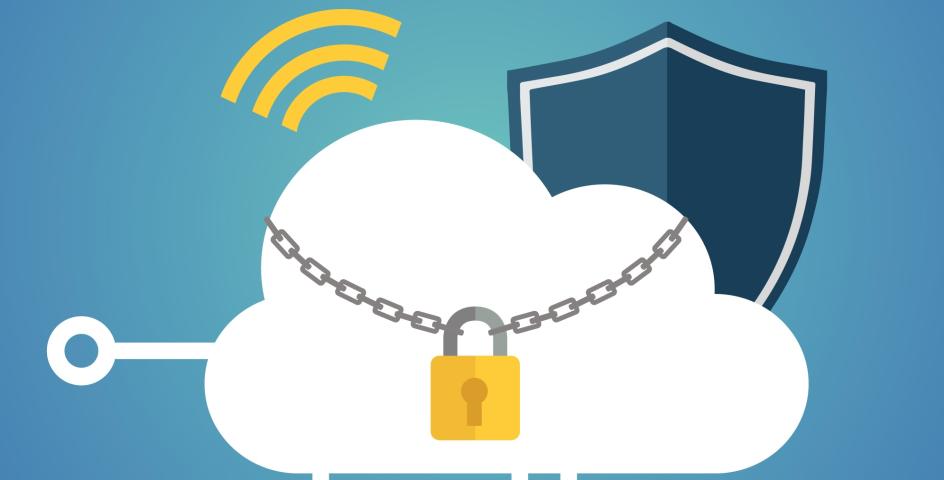In today’s fast-evolving digital landscape, network security remains at the forefront of organizational concerns. With advanced threats continually emerging, the demand for skilled professionals adept in CCIE security is on the rise. Crafting robust cybersecurity policies is essential to safeguarding sensitive data, maintaining regulatory compliance, and preventing security breaches. For professionals pursuing CCIE Security certification, understanding how to build and enforce comprehensive cybersecurity policies is a critical skill, ensuring they are well-equipped to manage complex security environments.
This blog post explores the essential steps in creating and implementing effective cybersecurity policies, discussing key considerations for network security management and offering guidance for those on the path to becoming CCIE Security experts.
1. Understanding the Importance of Cybersecurity Policies
Cybersecurity policies serve as the backbone of any effective security strategy. They establish the rules and protocols that safeguard an organization’s network, data, and assets from cyber threats. By setting clear guidelines on acceptable behavior, access control, data protection, and incident response, organizations can significantly mitigate security risks. For network security professionals, especially those in CCIE Security training, creating strong cybersecurity policies is a foundational step toward maintaining secure environments and ensuring business continuity.
2. Key Elements of a Strong Cybersecurity Policy
A comprehensive cybersecurity policy should address the following components:
Access Control: Define who has access to various parts of the network, and under what conditions. Access control policies help prevent unauthorized access, ensuring that sensitive data remains protected. Multi-factor authentication (MFA) and role-based access controls (RBAC) are commonly used techniques.
Data Protection: Outline protocols for handling sensitive information, including data classification, encryption, and secure storage methods. Data protection policies help minimize the risk of data leaks and unauthorized disclosures.
Network Security: Establish guidelines for firewall configurations, VPN usage, and intrusion detection and prevention systems (IDPS). Network security policies help fortify the network perimeter and mitigate potential threats.
Incident Response: Define a clear protocol for detecting, reporting, and responding to security incidents. A well-structured incident response policy is vital for minimizing the impact of cyber-attacks and facilitating swift recovery.
Acceptable Use: Specify guidelines for appropriate use of company resources, such as internet access, emails, and social media. Acceptable use policies help maintain a secure and professional network environment.
3. Steps to Building Cybersecurity Policies
Building effective cybersecurity policies requires careful planning, collaboration, and communication. Below are essential steps to create policies that align with organizational goals and regulatory requirements.
Step 1: Conduct a Risk Assessment
The first step in developing cybersecurity policies is conducting a thorough risk assessment. This involves identifying potential vulnerabilities, assessing the likelihood of various threats, and evaluating their potential impact on the organization. By understanding the organization’s risk profile, security teams can prioritize resources and focus on the most critical areas.
Step 2: Define Policy Objectives
Once risks are identified, establish clear objectives for the cybersecurity policy. Objectives should be specific, measurable, achievable, relevant, and time-bound (SMART). For instance, if data protection is a priority, a policy objective might be to reduce data breaches by implementing stronger encryption and access controls within a specific timeframe.
Step 3: Involve Key Stakeholders
Cybersecurity policies impact all departments, so it’s essential to involve stakeholders from different areas of the organization, including IT, legal, HR, and management. Engaging stakeholders helps ensure that policies are practical, enforceable, and aligned with organizational needs. Additionally, collaboration promotes a culture of security awareness throughout the organization.
Step 4: Develop Clear and Concise Policies
When drafting policies, clarity is paramount. Policies should be easy to understand, without excessive technical jargon, so that all employees can follow them. For example, rather than specifying detailed firewall rules, outline general guidelines for network access, and allow technical teams to manage specific configurations.
Step 5: Address Compliance Requirements
Many organizations are subject to regulatory requirements, such as GDPR, HIPAA, or PCI-DSS. Ensure that cybersecurity policies align with relevant regulations to avoid legal repercussions and ensure data protection. Compliance should be considered at every stage of policy development, from data protection to incident response.
Step 6: Implement and Communicate Policies
Once policies are developed, it’s crucial to communicate them to all employees. Provide training and resources to help employees understand their roles and responsibilities in maintaining network security. Regularly reminding employees of cybersecurity policies helps reinforce compliance and fosters a culture of security awareness.
Step 7: Regularly Review and Update Policies
Cybersecurity is an ever-evolving field, with new threats emerging regularly. To stay ahead, organizations must periodically review and update their cybersecurity policies. Regular audits and assessments can help identify outdated practices and highlight areas for improvement. Staying current with the latest security trends and CCIE Security best practices is essential for maintaining effective policies.
4. Common Challenges in Cybersecurity Policy Implementation
Implementing cybersecurity policies can be challenging, especially in larger organizations. Some common challenges include:
Resistance to Change: Employees may be resistant to new policies that require changes to their workflow or impose restrictions. Effective communication and training are essential to overcoming resistance and promoting compliance.
Lack of Resources: Budget constraints can limit an organization’s ability to implement and enforce cybersecurity policies. In such cases, organizations must prioritize policies that address the most significant risks.
Complexity of IT Infrastructure: In complex IT environments, implementing and enforcing cybersecurity policies can be challenging. Organizations may need to invest in tools and technologies that facilitate policy enforcement and monitoring.
5. The Role of CCIE Security Professionals in Cybersecurity Policy Management
For CCIE Security professionals, developing and enforcing cybersecurity policies is a key responsibility. With their expertise in advanced network security, CCIE Security-certified individuals are well-equipped to design policies that address complex security challenges and align with industry best practices. Their role often involves:
Risk Management: Assessing risks and identifying vulnerabilities in the network infrastructure.
Policy Development: Drafting policies that address specific security needs, such as access control, data protection, and incident response.
Training and Awareness: Educating employees about cybersecurity policies and best practices to ensure compliance.
Monitoring and Enforcement: Implementing tools and processes to monitor policy compliance and detect potential violations.
6. Tips for Enhancing Cybersecurity Policy Effectiveness
Here are some tips for improving the effectiveness of cybersecurity policies:
Simplify Policies: Make policies as straightforward as possible. Complex policies are less likely to be understood and followed by employees.
Conduct Regular Training: Offer regular training sessions to keep employees informed about security policies and best practices.
Utilize Automation Tools: Use automation tools to enforce cybersecurity policies and monitor compliance. Tools like Security Information and Event Management (SIEM) systems can help identify potential policy violations in real-time.
Encourage Employee Feedback: Involve employees in policy development and ask for feedback. This helps ensure policies are practical and relevant to the daily operations of different departments.
Conclusion
Building and implementing effective cybersecurity policies is a cornerstone of network security management, particularly for those pursuing CCIE Security certification. These policies establish the foundation for protecting sensitive data, ensuring compliance, and maintaining the integrity of the network. By following best practices in policy development, organizations can create a secure and resilient IT environment that minimizes risks and enables safe business operations.
For professionals undergoing CCIE Security training, mastering cybersecurity policy management is crucial. This knowledge not only prepares them for the certification exam but also equips them with the skills needed to effectively manage security in any organization. With the right cybersecurity policies in place, businesses can operate confidently in an increasingly complex and threat-prone digital landscape.







